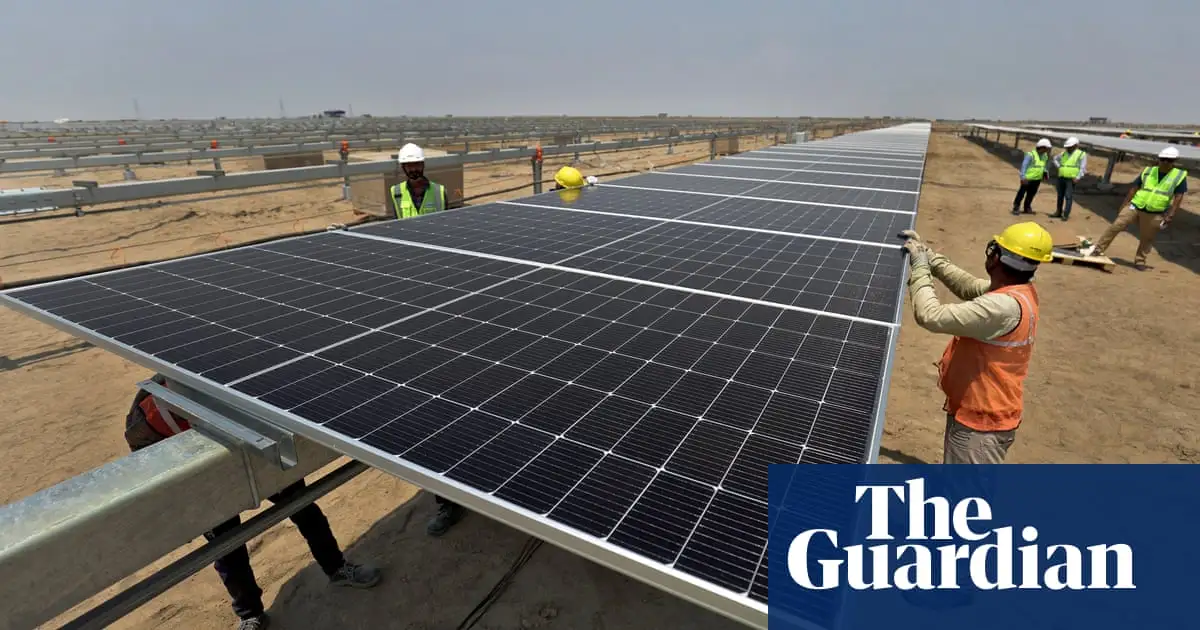Renewable energy accounted for more than 30% of the world’s electricity for the first time last year following a rapid rise in wind and solar power, according to new figures.
A report on the global power system has found that the world may be on the brink of driving down fossil fuel generation, even as overall demand for electricity continues to rise.
But meanwhile, when price of energy enters negative figures, it’s the solar farms that get ordered to shut down operation.
Which still means that fossil fuel power plants loose money in those periods due to low electricity prices. Those low prices also lead to electricity storage and more electricity consumption. The later is good, when it replaces other fossil fuel consumption(usually that is).
I really wish that is true but I seriously doubt it. Although my country made a hard shift into renewables (hydro, wind and solar, more recently) to the point we have had entire days when those sources alone can provide the necessary energy to run the country, while fully deactivating coal centrals and only maintaining on or two gas powered, storage hasn’t been a great concern, unless we count green hydrogen as such, with a plant to be built somewhere in the near future (or not).
There are basically three options to deal with overproduction:
- export
- storage
- shutting it done
The cheapest way of using wind and solar actually includes shutting done some of it at excellent days, so the capacity is enough to provide enough power at just okay days. The other problem is that storage is an issue. Right now pumped hydro and batteries are the only ways we have economically somewhat able to actually store electricity economically and both are at the expensive end. So they are usually just used to balance the grid. Hence the optimum is more in having overcapacity. The other option is to use the water reservoir of large hydro river plants, to vary the electricity production. that works rather well. The other big one is exports. As soon as a grid is large enough(continent sized), the weather matters a lot less. So you might see a lot of hvdc lines going from your country to other ones being planned, built and finished.
However most of the world is not even close to that. At 30% and a lot of it hydro, renewable electricity production is mostly just replacing fossil fuel.
Won’t anybody think of the poor fossil fuel industry?
Is this installed capacity, or actual power output? If installed capacity, you’ll need a lot more than 100% since that’s just the nameplate max capacity, not the average. I’m glad we’ve gotten this far, but we still need to transition to 100% or more very soon.
It’s generated electricity, not installed capacity:
https://ourworldindata.org/data-insights/renewable-electricity-2023
key part: includes hydropower. The world was at 20% already in 1985.
I’d assume electricity consumption has grown a lot faster than hydropower capacity since then.
A bit. We have basically done x2.5 in electricity production since 1985 and x2 in hydropower.
The trend line looks good though, we’ve been mostly maxed out on hydropower for decades.
Cool. I guess I was thinking in the US. Globally is still getting more
This is the best summary I could come up with:
Renewable energy accounted for more than 30% of the world’s electricity for the first time last year following a rapid rise in wind and solar power, according to new figures.
A report on the global power system has found that the world may be on the brink of driving down fossil fuel generation, even as overall demand for electricity continues to rise.
Clean electricity has already helped to slow the growth in fossil fuels by almost two-thirds in the past 10 years, according to the report by climate thinktank Ember.
The surge in clean electricity is expected to power a 2% decrease in global fossil fuel generation in the year ahead, according to Ember.
World leaders are aiming to grow renewables to 60% of global electricity by 2030 under an agreement struck at the UN’s Cop28 climate change conference in December.
This would require countries to triple their current renewable electricity capacity in the next six years, which would almost halve power sector emissions.
The original article contains 394 words, the summary contains 164 words. Saved 58%. I’m a bot and I’m open source!
Nice, now we just need to increase non-fossil fuelled energy production another 900% in order fo get rid of fossil fuels!
It’s a start. Better than nothing and better late than never.




